SEARCH






|
|
|
|


As many of us Jacek Stefan was troubled by the question: "To be, or not to be (a profi)?" Today he doesn't have no doubts. For him, taking pictures for fun and making ship designs for living is a much better solution that the other way round.
He quotes Ansel Adam to express his photographic vision: "My work represents me, not "photography as it should be."
Jacek allowed us to have a closer look on the strong personality behind his photographs.
Enjoy this most interesting interview...
Can you tell us about yourself, your hobbies and other jobs, Jacek?
Ship designing is my profession. I treat photography as a serious hobby but it impacts only a part of my life. I am a notorious reader but also like outdoor activities and especially mountain excursions. In the past I had been infected by a computer disease (at the expense of sleep and photography) but luckily was cured and after that the computer has been only a working tool.
How has your history and life experience affected your photography?
I don’t remember direct connections. However, for a short period of time I had been seriously thinking about professional photography but quickly realized that it was not for me. It happened when I had attended the wedding ceremony of my friends, acting in the capacity of the buddy photographer and shortly thereafter was persuaded to take pictures of another young couple. That same day I understood that I didn’t want to be a wedding photographer. People didn’t understandme and often had been surprised spotting me at an event without a camera. Apparently, they assumed that as a photo hobbyist I should salivate at every opportunity of “useful” shutter pressing. They could not comprehend how deadly bored I felt in such a role. It was not so easy to explain that my situation could be compared to that of a mountain trekking lover being forced to walk the stairs repeatedly up and down because it was what he/she supposedly liked most. Add to that a commercial subplot, meaning that if you like something you should do it for free or, maybe, even be grateful for the front row position.
Later I was forced twice to take on a paid task and, since I didn’t see the end of it, I resorted to recommending to the client one of my profi colleagues. After that I never agreed for a paid session again and with such experiences the matter was perfectly clear. Professional photography was not for me. Sometimes, having in memory great reporters, I thought about such a direction, but observing the gray every-day reality of capturing tiresome preaching of boring politicians I definitively dropped the idea of professionalism.
Which are your most important experiences that have influenced your art?
Maybe it is pretty unusual but I still remember times when I met photographic art which didn’t appeal to me at all. Enthusiastic reviews that I read in magazines and catalogues also didn’t convinced me. It was not until I realized that it hadn’t been creations of photographers but of artists using photography as a means of expression.
Having this clarified, I understood that the world of photography had a lot of capacity. Despite my initial misunderstanding, I positively opened myself to various photo-movements, queerness, follies and other out of the ordinary influences and from this phase I still retained a fistful of ideas of photo projects waiting for realization. Such as the following examples:
Clock faces
Never-ending topic. I can take pictures every hour, every minute, quarter, etc. Alarm clocks, standing clocks, wall clocks, swing clocks, hand watches and stoppers. Analogue and digital. In what way to illustrate in a still photo a clock someone forgot to wind? The number of combinations is practically unlimited. The series should be provided with a catchy title, like CLOCK-FACE-EMOTICON or whatever seems to be attractive. In a second stage I would include sun clocks.
Multiplications with a surprise
For example four salt shakers and one pepper shaker, three plant pots and shards of a fourth one, six tooth-glasses and two potties, eight and half of a butterfly, seven dogs and a chimp tail, three nude graces and a worker jacket, a dozen beers and one hooch bottle, five sorts of nuts and dentures.
Macro photography
Heads of matches, pins as well as needles. Details of pot plants, dices, bibelots, soles and laces. Buttons, stamp perforation and toilet paper flounces. A composition of varicoloured paper scraps would also be quite good. Cigarette ash, newspaper or coal ash, etc. Pattern of floorboards, wood panelling and finish foils. Meal elements.
What first attracted you to photography?
At the beginning I had been a typical camera user taking family photos. And all of a sudden one day it happened that I put my hands onto an OM camera and found that even handling it could be a pleasure. Moreover, at this time I was a technical university student and obviously needed to posses in my personal universe an area where pure technology would be driven away by completely different activity. So, as the result, I started to take “absolutely needless” photos. But they were necessary for me.
Describe your overall photographic vision.
For me photography is a means of expression one can freely bend to his/her will. In the past I was interested in the matter of the truth in photography and tried to follow the discussion or rather quarrel about it. The digitalization made the problem even more conspicuous. But one day I realized that during those never-ending disputes two of the most powerful tools of manipulation were almost always ignored, namely timing and framing. The timing is obvious but regarding the framing let me illustrate this by the following example: Well, imagine that an E (Episode) has taken place with participation of a VIG (Very Important Git) and an AG (Accidental Gaper). The E has been illustrated by two pictures
1 - E + VIG – AG’, and
2 - E – VIG + AG’.
In the photo No. 1 the VIG is presented but a fragment of a beer bottle held by AG which has been framed by accident (i.e. the bottle piece rather than the AG being outside the frame) is removed (by a computer trick). In the photo No. 2 the VIG is overlooked (intentionally, because he stood only two paces away), however the beer flask is clearly visible (no computer interference). Let us ask sixty-four thousand dollar questions:
1. Wich picture is more authentic?
2. Which picture is a result of manipulation?
3. Which picture tells more about on the subject of E?
4. Which picture is more interesting?
5. Which picture is “nicer”?
6. Which picture is better composed?
7. Which picture will sell better?
In what way it functions in a different but photo-related field can be illustrated by the following story:
In a contest the grand prix was awarded to a Photographer.The vernissage was attended by a Critic delegated by Magazineeditors. For some reason(but for sure he had no texts like “A critic is an artist who failed” printed on a T-shirt) the Photographerdid not commend himself to theCriticand due to this fact was punished by non-existence in the Magazine. In his coverage published in the MagazinetheCritic did not report the contestresults but only wrote whose pictures were liked most (not those of the Photographer, needless to say), not specifying by whom they were liked and in what way it was related to the results.
Now, all of that said, I’m going to add that this story is real and I am this photographer.
So, at the end of the day, I stopped analysing the matter any further. I am not sure if it can be classified as a sort of photographic vision but now I can quietly admit that I am a manipulator, “...but I am not the only one.” – e.g. finding the following text: Just say yes was a reassuring surprise.
Your work is very diversified. Why are you drawn to so many themes in Photography?
As I have already mentioned, photography is my hobby and I take pictures only for the fun of it. It seems that in the course of time certain subjects simply stop to be interesting to me but new ones turn up. On the other hand, for the same reason I am not able to reach the masterly level in a single specific topic. However I can live with it and prefer such an approach to doing something out of a sense of “obligation”. E.g., for some time I was wandering around neglected backyards or larking in cemeteries on the look-out for cats. Some other time I was rather people oriented. One month I tried to capture e beautyapture was raather ingle beauty, another day pursued ugliness. Occasionally I was tempted to create an illustration for a book I had just read. Or experiment with pinholes or whatever. It is easier to list what I don’t or didn’t do than enumerate all the themes I tried. For a short period of time I had been trying sports but found it rather boring. Today, if I take sport-related pictures, the sport is used only for the background of things being more interesting to me. With such an attitude photography not only doesn’t bore me but, quite the opposite, amuses me more and more. I also observe that it becomes more and more unserious. Maybe in my small personal photographic world I have migrated from the Renaissance to the Baroque. Or rather fell back to the Stone Age.
What is more important to you, the mood/story behind your images or the technical perfection?Certainly not the technical perfection. In the film era the technical perfection was simply outside my reach. Despite the fact that I had tried hard I was very often disappointed by the results. For example the fight with deep blacks was a real nightmare until trying various papers I found the proper developer and happily thought the fighting was over and I was close enough to the goal but later bought another batch of paper and ended up with different results. And I tried really hard. On other occasions I experimented with filters for B&W for colour slides and afterwards having been lectured by a lab manager about such incompetency, I started to process the slides myself. In reality it was really time-consuming and sometimes frustrating because the resulting slides were occasionally too brownish. Digging dipper I learned that due to poor manufacture tolerances various series of slide films required different amounts of potassium iodide to compensate this variations. So I was back at the same point again. In consequence I faced the decision whether to be an eternal trier and never have any meaningful results or, forgetting the perfection dream, focussing on taking pictures and process them as best as I could with my “standard” conditions. I known about the danger of eternal trying because I met photographers who, when being asked for examples of their work presented only half-products accompanied by explanations that these were only the samples which soon would be finally reprocessed, which never happened.
This historical background influenced my approach to technical perfection and despite the fact that the digital revolution made life easier in this regard, I still don’t consider it as an ultimate goal. And the fact that I have been seeing so many technically perfect photographs of nothing, confirmed me in this matter.
Therefore, both the mood and/or story remain and they are of equal importance for me.
What generally is your relationship to your subject matter beyond being an observer?
Do you prepare carefully the locations where you are intending to photograph?
Sometimes yes, sometimes no. If I have at one moment one specific project in mind, then usually I also know places where it is easier to realize it. Another time it is a matter of coincidence. However there is one fundamental prerequisite, namely a camera at hand. By contrast, during a probably unique voyage abroad one should take every opportunity. And in my opinion a photographer should not be obtrusive.
Can you tell us something more about your work flow?
There is nothing special here. Maybe one untypical item is that I usually elaborate “seasoned” pictures. It must be a really extraordinary reason that forces me to deal with the newest photos. I prefer to wait and, in the meantime, to process the snaps mentally. As the result, from time to time I am able to see the same photo differently. But frankly speaking, the statistic is not reassuring because after such a seasoning period a majority of photos simply looks uninteresting. I think that it is partly the result of faded memorization of a scene and of looking onto its illustration more as an outsider. To exemplify that process please consider a photo of a movie star. Such picture may look very interesting for people knowing him/her but may be completely uninteresting for others who are not able to recognize the person.
What is your most important advice to a beginner in Photography and how does one get started?In short, if you swallowed a photo bacillus, be patient and try to learn. I remember the earliest two contests I sent pictures expecting acceptance and an award. So I told myself: “What an artist am I”. But the stream of rejections that came later healed me from such thoughts. In regards to learning I used two buy every photo publication I could get. The language didn’t matter, I bought even a Hungarian magazine where I didn’t understand a single word. But pictures were all that mattered.
Don’t get trapped in the hardware realm but, nevertheless, try to master the gear you possess. Being a Nikon user I tried to handle a Fuji in a similar manner and found that too many snaps were qualified for a rendezvous with the delete key. From my previous experience I know that the simplest way, i.e., to buy the newest Fuji would not be a wise solution. So instead of trying to find a method, to force the system to work in the way I expect. Using in the past the manual-focus-only cameras, I knew that I was the weakest link responsible for badly focused cases. And this sort of thinking is still with me.
Being a 1X member, I take active part as a member curator. Seeing e.g. 100 pictures, you try to estimate what number of pictures you find to be better than your own. And better according to your own criteria. If the word “better” does not work for you, phrase this instead as the question: What percentage of pics I like better than my own. Assuming that the submissions represent the average level you would be able to estimate your present grade of skills. It is subjective estimation but it is OK. since it is done for personal usage.
And as an enthusiast you are a fellow of the clan. That means that you can wander your private track, so if you like to buy a Seconic – great, drag the heaviest Manfrotto – excellent, together with a classic Linhof, moreover – perfect! Furthermore, if you meet a soul trying to convert you with the use of some superficial talk, you could attain almost the same result, simply ignore him or, if you are in a good mood, just say that for you “almost” is not good enough.
Finally, I’m going to pass along my personal secret. For me the greatest merit of being an amateur is that I can not touch a camera for a month or longer if I don’t feel like it.
Who are your favourite photographers and more importantly, how has your appreciation of their work affected how you approach your own photography?
Long ago before I started to take photos I had visited an exhibition of the Magnum group. Today I remember only two pictures:
“A boy walks along the road to Cuzco” by Werner Bischof, and
“Loyalist Militiaman at the Moment of Death, Cerro Muriano, September 5, 1936” by Robert Capa.
These two photos found a permanent place somewhere in my mind and probably influenced my photographic imagination. Thousands of others seen later occupy a different ground. Never before did I think of them this way but the boy picture is about mood and the other one about story.
One of the masters whose work I admire is Edward Hartwig
I think I can add that he was the head of a panel who awarded the grand prix to the Photographer. But be assured it is not the reason of my admiration. It started about a dozen years before the time of the contest.
Is there any specific photo taken by another photographer that has inspired you a lot and why?
I have seen so many of them that it is really difficult to distinguish the most important to me. But beside the two I singled out above I can mention the works of Henri Cartier-Bresson, so the same circle again, and the book which really encouraged me, namely “Eisenstaedts Guide to Photography”. After so many years I still remember some pictures from it, however, forgot almost everything about equipment, being only a tool enabling the captures.
Are there any specific directions that you would like to take your photography in the future or any specific goals that you wish to achieve?
I would like to continue my photographic adventures and especially that field of it which induces the sheer joy of creation. Also hope that beside plenty of ideas already stored in my notebook I will still be able to discover new areas of exploration, possibilities as well as ways of expression. So I expect to continue my photo journey with a blue guitar.
Describe your favourite photograph taken by you and why it is special to you?
It is impossible because my favourite is the one I missed to take. I will not describe it because I hope for another opportunity. But more seriously, I have no such single photo among the taken ones, however still have the mental bond with many of them.
Like this picture from the old monochrome period:
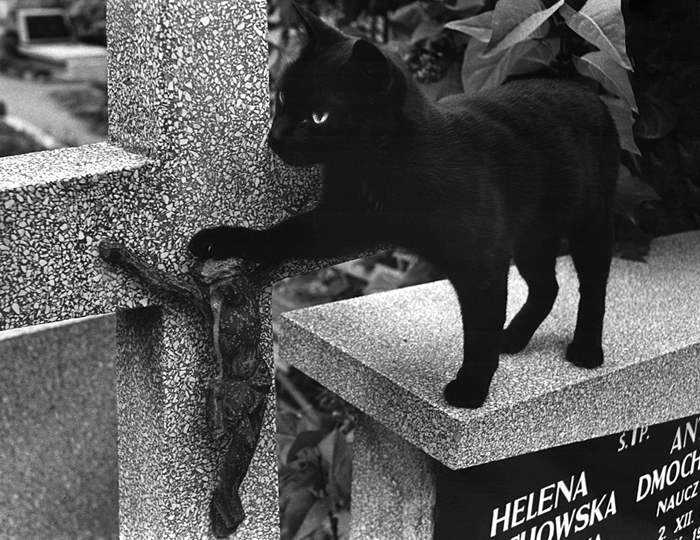
and this one from another epoch (the moustache is real, not painted):
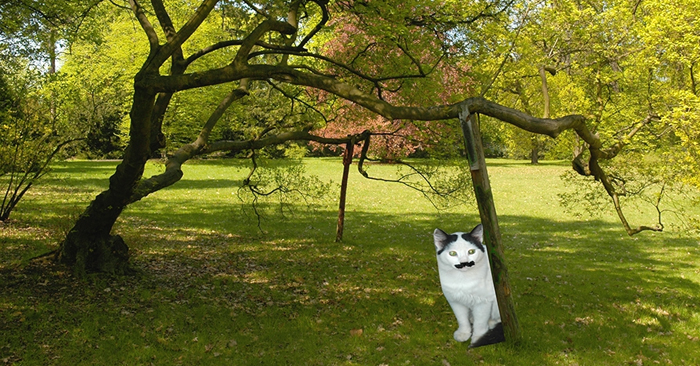 "Tribute to Dali"
"Tribute to Dali"
Is there anything else you wish to add and what do you think about 1X as a home base for your work?
A few observations about 1X in the itemized form to make it shorter:
1. Regarding drawbacks of 1X, please search for them yourself.
2. Do I agree with complains? Since I am still here, the answer is NO. Despite its flows it is better than many other places.
3. As concerns the evolution of the site, in the past the zero-one system was applied (picture published or not, not such a thing as the portfolio). Talk about frustrating
4. No one is anonymous here in the photographic sense. Real names or nicknames don’t matter. But the pictures tell everything. As the side effect it cannot be dominated by theoreticians.
5. The number of unique photo views in my 1X gallery exceeds 965 thousand. Visitors of my exhibitions (and probably of those I participated in) never exceeded a few dozen.
“Window cleaners”
 | Write |
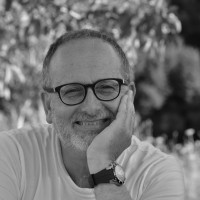 | Settimio CIANI PRO I was really glad to read your inteview. I appreciated your approach to photograpy and to different subjects of photograpy. Wonderful photos with many manners ( B/W, colors) and subjects ( portraits, landscape, street photograpy). Congratulations and best wishes, Jacek. |
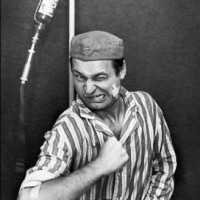 | Jacek Stefan PRO Thank you so much, Settimio! |
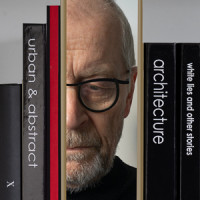 | Luc Vangindertael (laGrange) CREW Hmm ... most interesting thoughts on photography .... and a brilliant diversified portfolio. "Tribute to de Chirico" is one of my absolute favourites. Your street work is outstanding .... love the tongue in cheek humour. Congratulations Jacek Stefan (still not sure what is your first name). |
 | Jacek Stefan PRO Much appreciated Luc! Thank you! BTW, the first name is the the first name. |
 | Luc Vangindertael (laGrange) CREW Good to know Jacek :-) |
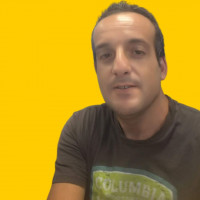 | Ozer Ozmen Congrats.:) |
 | Jacek Stefan PRO Many thanks Ozer! |
 | Susanne Stoop A very interesting interview. Vision and humor and wonderful photos. Congrats. |
 | Jacek Stefan PRO I am glad you like it, Susanne! |
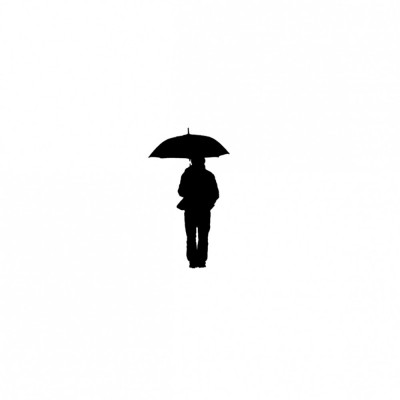 | Massimo Della Latta Complimenti.
|
 | Jacek Stefan PRO Thank you Massimo! |